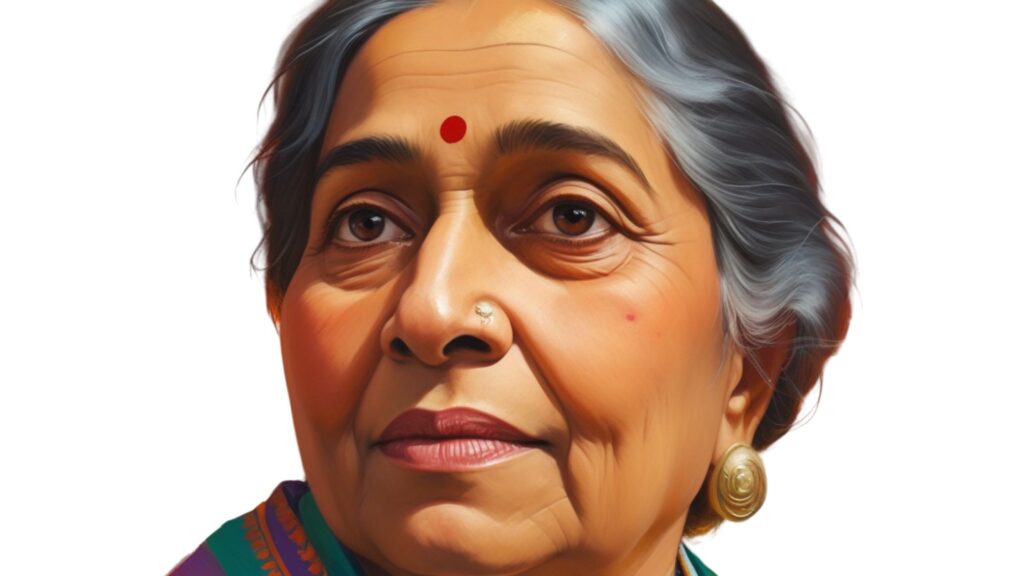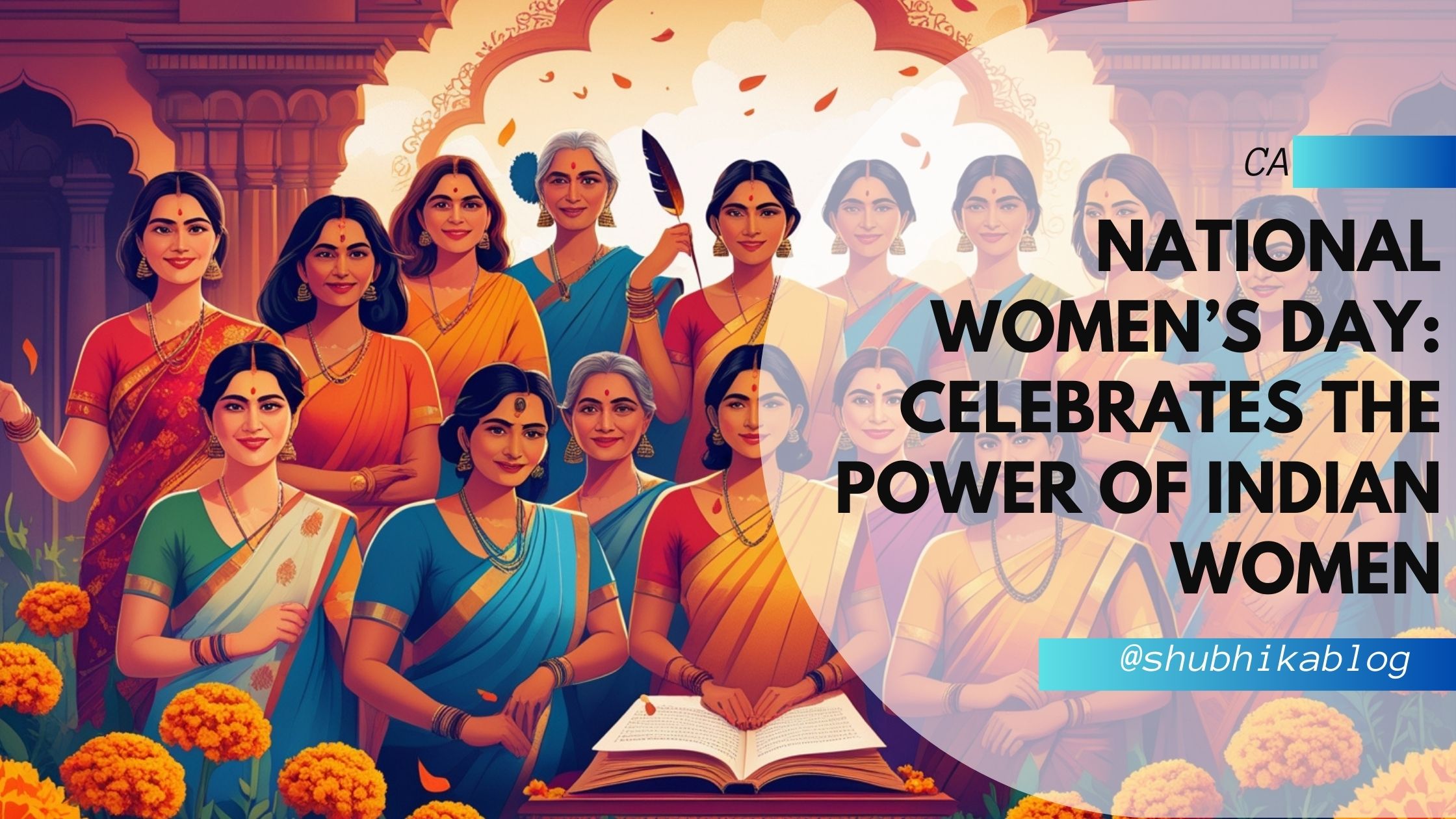Introduction
In the vibrant tapestry of Indian history and culture, women have long played pivotal roles—both in the public sphere and behind the scenes. From queens who led armies to grassroots activists advocating for the rights of marginalized communities, Indian women’s stories shimmer with resilience, creativity, and courage.
Among the many days that honor such contributions, National Women’s Day in India holds a special place. Observed every year on February 13, this day commemorates the birth anniversary of the legendary poet, orator, and freedom fighter Sarojini Naidu.
Often overshadowed by the more globally recognized International Women’s Day (March 8), National Women’s Day is a homegrown tribute that resonates uniquely with India’s history, culture, and aspirations.
In this comprehensive article, we will explore the origins and significance of National Women’s Day, delve into the life and legacy of Sarojini Naidu, and understand how this day differs from International Women’s Day.
We’ll also look ahead to National Women’s Day 2025—examining how the day might continue to evolve—and address common questions, controversies, and public perceptions associated with this observance.
Whether you’re a student, educator, policymaker, or simply a curious reader, this deep dive offers an engaging, storytelling approach to understanding why National Women’s Day matters and how it can inspire a more equitable future for all.
1. The Story Behind National Women’s Day in India

The roots of National Women’s Day in India can be traced to the birth anniversary of Sarojini Naidu—February 13, 1879. One of India’s most distinguished freedom fighters and poets, Sarojini Naidu played a crucial role in the Indian independence movement. After Independence, the nation recognized her monumental contributions not only to politics but also to literature, social reform, and women’s empowerment.
A few essential points that frame the genesis of National Women’s Day:
Date Significance: While Women’s Day globally is celebrated on March 8, India specifically chose February 13 to honor one of its cherished heroines, Sarojini Naidu.
Focused on Indian Realities: The day addresses uniquely Indian contexts—social, cultural, and economic issues that affect women’s lives in the subcontinent.
Government and Institutional Support: Over the years, various governmental and non-governmental organizations have organized programs, conferences, and awards to celebrate the achievements of women across fields.
Key Milestones in Establishing National Women’s Day
Post-Independence Honor: Shortly after India gained freedom, Sarojini Naidu was recognized as a national icon. Several institutions urged the government to dedicate a day to celebrate her and, by extension, the women of India.
Gradual Recognition: It took years before the day was widely acknowledged. However, social organizations, women’s rights groups, and educational institutions began quietly observing February 13 as a day to celebrate women’s contributions.
Consolidation: Over time, more organizations joined in, and the day gained official recognition. It came to be called National Women’s Day, with emphasis on the synergy of Sarojini Naidu’s legacy and broader women’s empowerment.
Today, this day stands as a reflection of India’s dedication to honoring female trailblazers—both historical and contemporary—and encourages women and men alike to engage in meaningful discussions about gender equality and progress.
2. Sarojini Naidu: A Profile in Courage and Creativity
Sarojini Naidu was born on February 13, 1879, in Hyderabad, a city renowned for its cultural tapestry and intellectual heritage. Known as the “Nightingale of India,” she was a literary maestro whose poems and speeches echoed the themes of love, freedom, and patriotism. Yet, her life was far more than just poetic prowess.
Poetic Beginnings:
Sarojini wrote her first poem at a young age, showcasing a remarkable command of language and emotion.
She studied in London at King’s College and later at Girton College, Cambridge, polishing her literary skills and gaining exposure to progressive ideologies.
Role in the Freedom Movement:
Upon returning to India, Sarojini Naidu was drawn to the Indian National Congress.
She became a close associate of Mahatma Gandhi and other prominent leaders, organizing rallies, protests, and discourses that championed both national independence and women’s rights.
In 1925, she was elected President of the Indian National Congress—a groundbreaking achievement for a woman at that time.
Women’s Rights Advocacy:
Her speeches often highlighted women’s role in the freedom struggle and society. She believed that true freedom included social and economic liberation for women.
Sarojini also worked to reform social norms that held back Indian women, urging them to seek education, employment, and leadership positions.
Political Leadership:
After India’s independence, she served as the Governor of the United Provinces (now Uttar Pradesh), becoming India’s first female governor.
This appointment was not merely symbolic—she actively advanced policies for healthcare, education, and women’s development.
Literary Legacy:
Her poetry collections, such as The Golden Threshold, The Bird of Time, and The Broken Wing, remain cherished pieces of Indian literature.
Sarojini Naidu’s works often evoked the imagery of Indian landscapes, philosophical musings, and patriotic zeal, enthralling readers around the world.
With such a multifaceted personality—poet, orator, freedom fighter, and stateswoman—Sarojini Naidu stands as an emblem of what women can achieve in the face of patriarchal structures. It is fitting, then, that National Women’s Day aligns with her birthday, shining a spotlight on her continuing influence on generations of Indian women.
3. The Evolution of Women’s Day Celebrations in India
While National Women’s Day is specific to India and tied to Sarojini Naidu’s birth anniversary, Women’s Day celebrations in the subcontinent precede the official naming. Before the day was formalized, smaller pockets of activists and social workers marked women’s achievements throughout the year.
Early Traces of Commemoration
- Social Reform Movements: In the 19th and early 20th centuries, Indian social reformers like Raja Ram Mohan Roy, Savitribai Phule, and Ishwar Chandra Vidyasagar fought tirelessly against practices such as sati, child marriage, and for women’s education.
- Birth of Feminist Literature: Magazines and newspapers dedicated to women’s issues began to surface, discussing themes of empowerment, equality, and the need for women’s rights.
- International Influences: During colonial times, Indian leaders were exposed to global feminist movements—particularly the suffragette efforts in Europe and America. This cross-pollination of ideas influenced the shape of early Women’s Day observances.
Contemporary Evolution
As India progressed through various decades—post-independence euphoria, socialist expansions, liberalization in the 1990s, and the subsequent digital revolution—womens day and National Women’s Day took on different hues.
- 1970s-1980s: Women’s organizations across universities became vocal about domestic violence, wage disparities, and political representation. They began hosting seminars, events, and protests around the theme of Women’s Day.
- 1990s-2000s: Economic liberalization broadened the opportunities for women in corporate sectors, media, and technology. Women’s Day events began focusing on career development, entrepreneurship, and leadership training.
- 2000s-2020s: With the rise of social media, the celebration of Women’s Day became more visible, rallying large-scale public support. Hashtags, digital campaigns, webinars, and influencer collaborations made Women’s Day a trending topic each year.
Today, India stands at a crossroads: women are scaling new heights in politics, science, arts, sports, and entertainment, yet problems of gender inequality, violence, and societal pressures persist. This dual reality underscores the continuing relevance of days like National Women’s Day and International Women’s Day—they serve both as celebrations and calls to action.
4. National Women’s Day vs. International Women’s Day
It’s essential to distinguish National Women’s Day—observed on February 13 in honor of Sarojini Naidu—from International Women’s Day, which is celebrated worldwide on March 8.
1. Date and Historical Context
- National Women’s Day: Established to coincide with Sarojini Naidu’s birth anniversary. The day is intrinsically linked to India’s freedom struggle and the cultural context of Indian society.
- International Women’s Day: Traces its origins to labor movements in the early 1900s in the United States and parts of Europe, evolving into a global event recognized by the United Nations.
2. Focus Areas
- National Women’s Day: Focuses predominantly on Indian women’s issues—ranging from rural development and healthcare to political representation. Sarojini Naidu’s life story serves as a beacon for how Indian women can lead.
- International Women’s Day: Addresses a broader canvas of global gender issues such as reproductive rights, economic parity, violence against women, and political empowerment.
3. Celebratory Activities
- National Women’s Day: Ceremonies commemorating Sarojini Naidu’s works, policy discussions on Indian women’s progress, local community events, school functions, and special tributes to successful Indian women.
- International Women’s Day: Involves widespread global campaigns, corporate awareness drives, solidarity marches, and policy-oriented events under an annual theme given by the UN.
4. Coexistence
Although both days highlight women’s empowerment, many people in India observe both. National Women’s Day is a more localized celebration that resonates with India’s historical narrative, while International Women’s Day aligns with the global solidarity movement for women’s rights.
5. National Women’s Day 2025: A Vision for the Future
Looking ahead, National Women’s Day 2025 marks a significant juncture. As India continues to grow economically and socially, the role of women is evolving rapidly. From heading multi-billion-dollar start-ups to breaking records in sports, Indian women are at the forefront of progress—yet systemic challenges remain.
Potential Focus Areas for 2025 Celebrations
- Digital Empowerment
- The digital divide in India is still stark. Women, especially in rural areas, often lag behind in accessing the internet and digital literacy.
- By 2025, government schemes such as Digital India could lead to a more inclusive environment, but efforts to equip women with technological skills must continue.
- Women in STEM
- Science, Technology, Engineering, and Mathematics remain male-dominated fields globally.
- National Women’s Day 2025 could highlight scholarships, mentorship programs, and initiatives aimed at bridging the gender gap in STEM education and careers.
- Rural Entrepreneurship
- Microfinance projects and self-help groups have already shown success in empowering women economically.
- By 2025, these models could expand, encouraging more women in rural areas to become entrepreneurs, thereby uplifting entire communities.
- Policy Reforms
- The push for stronger women’s day legislations—be it maternity benefits, safer work environments, or improved representation in governance—could see renewed momentum.
- National Women’s Day 2025 might bring to the forefront new policies aimed at inclusivity, e.g., reservations for women in private sectors, skill-development centers, or financial inclusion programs.
- Representation in Politics
- Women currently make up a fraction of parliamentarians in India. However, with growing awareness and activism, 2025 might witness more women stepping into leadership roles.
- National Women’s Day can be an opportunity to engage with state and national governments to champion women-centric policies.
In short, National Women’s Day 2025 isn’t just a date on the calendar—it could represent a milestone that showcases India’s ongoing journey towards a society where gender barriers are systematically dismantled.
6. Why National Women’s Day Matters: Key Significance
1. Honoring a National Icon
By observing National Women’s Day on February 13, India pays homage to one of its greatest freedom fighters, Sarojini Naidu. This day keeps her memory alive for younger generations who might otherwise be unaware of her extraordinary contributions.
2. Encouraging Dialogue on Women’s Issues
Like any dedicated day, National Women’s Day encourages society to reflect on the status of women. It sparks conversations—whether at family dinners, educational institutions, or corporate boardrooms—about women’s rights, achievements, and the strides still needed.
3. Strengthening Unity
A day reserved for celebrating Indian women fosters unity across diverse communities, castes, and religions. It reminds everyone that women’s empowerment is not a factional cause but a collective mission, benefiting the entire nation.
4. Mobilizing Policy and Action
Governments and NGOs frequently unveil new schemes, scholarships, or policies around National Women’s Day. This synergy can accelerate programs that uplift women economically, socially, and politically.
5. Inspiring Future Generations
Stories of pioneering women like Sarojini Naidu, and contemporary icons such as Kiran Mazumdar-Shaw (business), Mary Kom (sports), and Falguni Nayar (entrepreneurship), can ignite the aspirations of young girls, signaling that no goal is out of reach.
7. How Communities Celebrate National Women’s Day
A. Educational Institutions
- Poetry and Essay Competitions: In honor of Sarojini Naidu’s literary legacy, schools often host competitions where students pen essays or recite poems focusing on women’s empowerment.
- Talks and Seminars: Colleges organize guest lectures highlighting women’s achievements in fields like science, politics, medicine, and arts.
B. Public Events
- Rallies and Marches: Youth organizations might hold marches to raise awareness about pressing women’s issues, including safety, education, and healthcare.
- Workshops: Non-profits hold workshops on topics like self-defense, health and nutrition, and leadership skills.
C. Corporate Engagement
- Corporate Seminars: Companies may invite successful women leaders to speak on leadership, balancing career and personal life, and professional skill development.
- Awards and Recognition: Some corporations align with this day to honor female employees who have made exceptional contributions.
D. Cultural Programs
Street Plays and Performances: Folk and contemporary arts groups put on performances illustrating the historical and modern-day struggles of Indian women, often drawing on the life of Sarojini Naidu for inspiration.
Social Media Campaigns: In the digital age, many celebrations happen online. Hashtags, short films, and user-generated content about inspiring women spread rapidly on platforms like Instagram, Twitter, and YouTube.
E. Philanthropic Initiatives
- Donation Drives: Charities and non-profits organize drives to support underprivileged women, focusing on areas like education, healthcare, and legal aid.
- Skill-Building Sessions: Encouraging skill development in tailoring, handicrafts, or digital marketing helps women become financially independent.
Overall, these activities converge to create a mosaic of uplifting experiences. The intent is not only to celebrate but to catalyze real, tangible change, propelling Indian women forward in every sphere of life.
8. Common Themes and Issues Addressed on National Women’s Day
National Women’s Day is more than a ceremonial observance. Each year, it provides a focal point for dialogues around topics that influence women’s lives in India.
- Economic Empowerment
- Debates over wage parity, the glass ceiling, and entrepreneurial support for women remain prevalent.
- Microfinance institutions and self-help groups often step into the limelight, showcasing success stories.
- Education and Literacy
- Access to quality education remains an ongoing struggle in parts of rural India.
- On National Women’s Day, educators highlight the importance of bridging gender gaps in enrollment, retention, and professional advancement.
- Gender-Based Violence
- Despite legal reforms, crimes against women persist. Women’s Day events offer a platform to discuss prevention strategies, legal rights, and the role of society in tackling violence.
- Workshops on self-defense, legal literacy, and mental health support are often organized.
- Political Representation
- The Women’s Reservation Bill and other measures to secure better representation in legislative bodies often resurface in discussions.
- Stories of women panchayat leaders, MPs, and ministers inspire future leaders.
- Health and Well-Being
- From maternal health to mental wellness, women’s health issues are highlighted.
- Organizations host health camps, screenings, and awareness campaigns on reproductive health, breast cancer, and more.
- Role Models and Mentors
- Celebrating the achievements of influential women—both historical figures like Sarojini Naidu and contemporary leaders—offers mentorship to younger generations.
By addressing these themes head-on, National Women’s Day becomes a catalyst for collective action and societal transformation.
9. Pros and Cons of Dedicated Celebrations for Women
While National Women’s Day and other women-centric celebrations like women’s day or womens day in various forms hold undeniable significance, they also come with their share of critiques and debates.
Pros
- Awareness and Focus
- A designated day ensures that women’s issues don’t get lost in the hustle of daily life.
- Media, government agencies, and corporations turn their attention to women’s causes, often leading to policies, debates, and tangible solutions.
- Motivational Impact
- Seeing women’s achievements highlighted can motivate young girls and women to pursue their ambitions wholeheartedly.
- Role models and mentors become more visible, creating a ripple effect of inspiration.
- Community Building
- Events, marches, and workshops bring together individuals and communities, fostering networks that continue to collaborate beyond Women’s Day.
- Cultural Celebration
- In India, National Women’s Day also celebrates the cultural and historical contributions of women. Songs, literature, and dance programs often flourish during this period.
Cons
- Tokenism
- Critics argue that once the day is over, many revert to old habits, sidelining the conversation about women’s rights until the next year.
- Some corporations may exploit the day for publicity without committing to real reforms in their workplace policies.
- Limited Scope
- A single day might not be enough to comprehensively tackle deep-rooted issues such as patriarchy, poverty, or lack of representation.
- Real change requires sustained efforts, policy reform, and continuous dialogue.
- Overemphasis on Certain Segments
- The achievements of urban, upper-middle-class women might be showcased prominently, overshadowing the struggles and successes of rural or marginalized women.
- Efforts must be made to ensure inclusivity and representation from various social strata.
- Commercialization
- Like many commemorative days, Women’s Day can become commercialized, focusing on consumer-driven campaigns rather than genuine empowerment.
- Discounts at retail stores or restaurants, while beneficial, don’t necessarily contribute to social change.
Balancing these pros and cons is crucial. While a day to celebrate women can be transformative, it’s equally important to ensure that it sparks ongoing efforts, not just momentary applause.
10. People’s Verdict: Public Perspectives on National Women’s Day
Across India, public opinions on National Women’s Day vary, reflecting the country’s diversity in culture, beliefs, and experiences.
- Enthusiasts
- Many see it as a cherished moment to acknowledge the strength of Indian women and their contributions to society.
- Young students often find the day educational, as it introduces them to lesser-known heroines of Indian history.
- Skeptics
- Some question the need for a separate National Women’s Day when International Women’s Day already exists on March 8. They argue that multiple observances dilute the focus on women’s issues.
- Others feel that societal mindsets won’t change because of a single day.
- Moderates
- Many Indians hold a balanced view: while the day is significant, it is only a starting point for discussions about gender equality.
- They emphasize consistent efforts throughout the year—policy changes, educational reforms, corporate diversity initiatives, etc.
- Feminist Groups
- Activist circles sometimes leverage National Women’s Day to mount campaigns against patriarchy, gender-based violence, and wage inequality.
- They argue that having a localized day is crucial for addressing India-specific issues, which might get overshadowed in global conversations.
- Corporate India
- The corporate sector often organizes leadership summits, skill-building workshops, and recognition events on or around this day.
- Critics within the corporate sphere sometimes highlight performative activism, pushing for deeper policy changes such as extended maternity leave, pay audits, and stronger anti-harassment measures.
Overall, the people’s verdict is a mosaic of acceptance, critique, and nuanced understanding. Yet, the day continues to gain traction, suggesting that National Women’s Day in India has become firmly embedded in the public consciousness.
11. Controversies Surrounding National Women’s Day
Despite being a day of celebration and reflection, National Women’s Day has not been without its share of controversies:
- Overlap with International Women’s Day
- Some question if having two distinct women-centric days within a month—February 13 and March 8—creates confusion or dilutes the impact.
- Proponents argue that having a national day underscores indigenous role models like Sarojini Naidu, while the international day fosters global solidarity.
- Political Appropriation
- Political parties sometimes use National Women’s Day for their agendas, announcing schemes or making promises aimed at garnering women’s votes.
- Activists call for authenticity, warning against token measures that might fade after elections.
- Sarojini Naidu’s Legacy Debates
- While widely respected, some historians debate Sarojini Naidu’s role in the freedom struggle, claiming she was overshadowed by other leaders.
- Others champion her as a critical figure in bridging the gap between moderate and radical factions of the Congress.
- Commercial Exploitation
- Retailers often run sales, promotions, and “women’s only” specials that overshadow the day’s original intent, focusing more on profit than empowerment.
- Certain critics see this as trivializing women’s struggles by turning a day of recognition into another shopping festival.
- Cultural Restrictions
- In certain conservative pockets of the country, celebrating women’s rights and empowerment publicly can face social resistance.
- Groups that hold traditional views about a woman’s role might protest events aligned with National Women’s Day, citing “Western influence.”
These controversies do not negate the significance of National Women’s Day, but rather, highlight the complexities of implementing large-scale social change in a country as diverse as India.
12. Frequently Asked Questions (FAQ)
Q: When is National Women’s Day celebrated in India?
A: National Women’s Day in India is celebrated on February 13 each year, commemorating the birth anniversary of Sarojini Naidu.
Q: Is National Women’s Day the same as International Women’s Day?
A: No. International Women’s Day is observed globally on March 8, while National Women’s Day in India is specifically tied to Sarojini Naidu’s birth date on February 13.
Q: Why is Sarojini Naidu associated with National Women’s Day?
A: Sarojini Naidu, known as the “Nightingale of India,” was a renowned poet and freedom fighter. She actively championed women’s rights and became India’s first female Governor. Her legacy is celebrated on National Women’s Day.
Q: How does National Women’s Day differ from other women-focused celebrations?
A: While numerous celebrations around the world honor women, National Women’s Day in India specifically emphasizes issues, achievements, and historical contexts relevant to Indian women. It also pays homage to the nation’s own icon, Sarojini Naidu.
Q: What are some common events held on National Women’s Day?
A: Schools, colleges, and organizations often host essay competitions, seminars, cultural programs, and award ceremonies. Community-based NGOs might conduct health camps and skill-building workshops, focusing on local women’s needs.
Q: Are there any controversies related to National Women’s Day?
A: Yes. Controversies include debates over having multiple women’s observances, accusations of political and commercial appropriation, and differences in historical perspectives regarding Sarojini Naidu’s contributions.
Q: How can I get involved in celebrating National Women’s Day 2025?
A: You can participate by volunteering with NGOs, organizing awareness campaigns, writing articles, or attending educational seminars. Social media advocacy is also a powerful way to spread awareness and engage in meaningful discussions.
Q: Is National Women’s Day recognized by the government in any official capacity?
A: While there isn’t a specific “public holiday” declared, government agencies and officials often release messages, organize events, and use the occasion to highlight women’s empowerment schemes.
Q: What are some must-read works of Sarojini Naidu?
A: Key poetry collections by Sarojini Naidu include The Golden Threshold, The Bird of Time, and The Broken Wing. Her works blend romantic, patriotic, and philosophical themes.
Q: Can men participate in National Women’s Day activities?
A: Absolutely. Gender equality benefits everyone, and male allies play a critical role in supporting women’s empowerment. National Women’s Day aims to build solidarity across genders.
<a name=”references”></a>
13. References
- NDTV: National Women’s Day Date, History, Significance and More
- The Indian Express: Sarojini Naidu — A Lyrical Voice of Women’s Empowerment and Nationalism
- News18: National Women’s Day Wishes 2025 — Celebrating Sarojini Naidu’s Birth Anniversary and Her Legacy
Concluding Thoughts
As the calendar flips each year to February 13, National Women’s Day in India offers a moment to look back at how far women have come and to envision a future without gender-based limitations. The story of Sarojini Naidu—her advocacy, her leadership, and her poetic eloquence—remains a guiding light for countless women who dare to dream bigger each day.
By taking the time to honor her legacy, India celebrates not just a single day, but a continuing journey toward equality, respect, and empowerment for all women. Whether through community gatherings, policy discussions, corporate acknowledgments, or simple reflections on the roles women play in our lives, National Women’s Day stands as an occasion of national pride and collective aspiration.
So, as we look ahead to National Women’s Day 2025, let’s remember that this observance is more than an event; it’s a clarion call for action—reminding us that real empowerment is nurtured in classrooms, offices, boardrooms, and legislative halls, across every corner of India.
In an ever-evolving world, one enduring truth remains: when we uplift women, we uplift entire communities, and by extension, an entire nation.











Leave a Reply